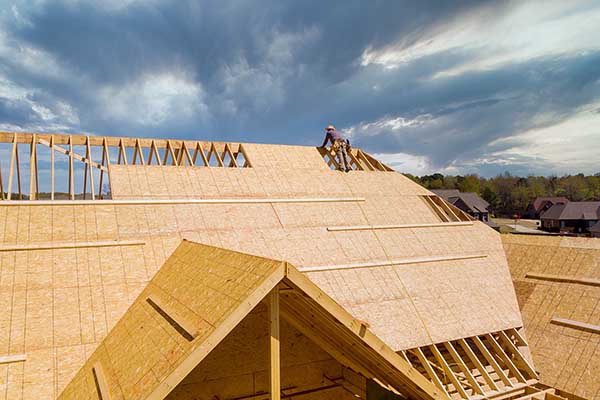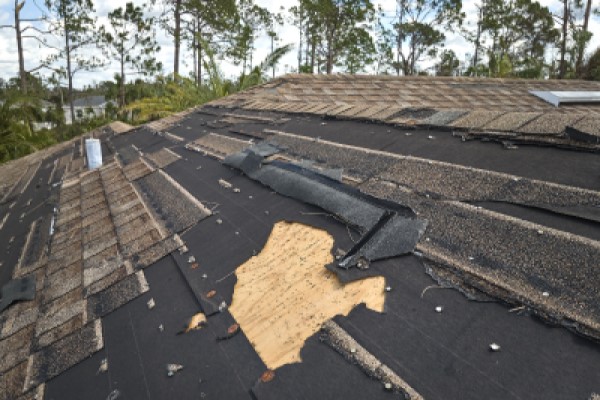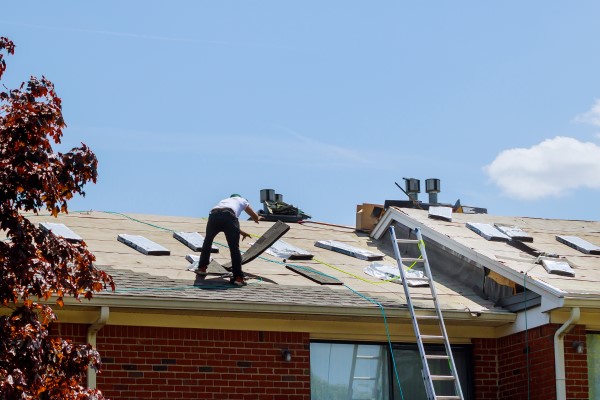The Silent Warning Signs Your Roof Needs Attention (Before It’s Too Late)
Wright's Roofing & Construction, Inc.
Locally Owned • Free Estimates • 24/7 Emergency Service
Free Estimates
Understanding Oregon’s Climate and Its Impact on Roofing
Your roof is your home’s first line of defense against the elements, but it often suffers in silence. Unlike obvious issues like missing shingles or visible leaks, some roofing problems are subtle and easy to overlook—until they escalate into major, costly repairs. Being aware of these less obvious warning signs can save you money, protect your home, and extend the lifespan of your roof.
In this blog, we’ll explore the silent signals your roof might be in trouble, such as changes in indoor air quality, rising energy bills, and unusual noises during storms. Let’s dive in to learn how identifying these subtle clues early can keep your roof repair—and your wallet—intact.
Unexplained Increases in Energy Bills
If you’ve noticed a sudden spike in your energy costs without making changes to your home’s usage, your roof might be to blame. Your roof repair plays a crucial role in regulating indoor temperatures by providing insulation and ventilation.
What to Watch For:
- Higher Cooling Costs in Summer: Damaged shingles or underlayment can allow heat to enter your home, forcing your air conditioner to work harder.
- Increased Heating Bills in Winter: Poor insulation or leaks in your roof can let warm air escape, making your heating system less efficient.
What to Do:
Have a professional inspect your roof for damaged insulation, ventilation issues, or gaps that might be affecting your home’s energy efficiency. Addressing these problems can save you money in the long term while keeping your home comfortable year-round.
Subtle Changes in Indoor Air Quality
A decline in your home’s air quality could indicate hidden roof damage. Moisture entering through small leaks or gaps can lead to mold and mildew growth, which not only damages your home but also poses health risks.
What to Watch For:
- Musty Odors: Persistent, unexplained odors can indicate moisture trapped in your attic or walls.
- Allergy Symptoms: Increased sneezing, coughing, or respiratory issues might be a sign of mold caused by roof leaks.
- Visible Mold: Look for dark spots on ceilings or walls, especially in the attic.
What to Do:
If you suspect mold, act quickly to identify and fix the source of the moisture. Roof repairs, combined with mold remediation, will help restore your home’s air quality.
Water Stains and Discoloration
Water stains on your ceiling or walls may seem minor, but they often signal more significant roofing issues. Water infiltration through small leaks can spread unnoticed, leading to structural damage and costly repairs.
What to Watch For:
- Yellow or Brown Stains: These often indicate water has seeped through the roof and into your ceiling or walls.
- Peeling Paint or Wallpaper: Excess moisture can cause paint to bubble or wallpaper to peel.
What to Do:
Investigate water stains immediately to determine their source. A roofing professional can pinpoint the leak and make necessary roof repairs to prevent further damage.

Wrights Roofing & Construction, Inc.
Provided me with what I needed to cover my roof when it started leaking in multiple areas till I can get it fixed. They where there for me when no one else was. I recommend them 100% they great people who have a heart.
-Shaina B.
Unusual Noises During Storms
While storms can be noisy, certain sounds might indicate your roof isn’t performing as it should. If you hear unusual creaks, whistling, or banging during bad weather, it’s time to investigate.
What to Watch For:
- Whistling: This can suggest gaps in the roofing material or poor ventilation.
- Creaking or Shifting: These noises may indicate structural weaknesses in your roof.
- Banging: Loose shingles or flashing can flap during high winds.
What to Do:
Conduct a post-storm inspection to identify areas that may need roof repair. Address loose materials and structural concerns to prevent further damage during future storms.
Sagging Rooflines
A roofline should be straight and even. If you notice sagging or dipping, it’s a clear sign of structural issues that require immediate attention.
What to Watch For:
- Sagging Areas: Visible dips in your roofline, particularly near the center or edges.
- Pooling Water: Flat or low-sloped roofs may develop areas where water collects.
What to Do:
A sagging roof is often caused by weakened supports, water damage, or aging materials. Call a professional roofer immediately to assess the situation and recommend roof repairs.
Granules in Gutters
Roof shingles are coated with granules to protect them from UV rays and weather damage. Over time, these granules can wear off, and finding them in your gutters is a sign your roof may need attention.
What to Watch For:
- Granules in Downspouts or Gutters: Excessive granule loss can leave shingles vulnerable to cracking and water infiltration.
- Bald Spots on Shingles: Check your roof for areas where shingles appear bare or worn.
What to Do:
If granule loss is significant, it may be time to replace your shingles. A roofing professional can assess whether a repair or full replacement is needed.
Attic Problems
The attic is often the first place where roofing issues manifest. Regularly checking this space can help you catch problems early.
What to Watch For:
- Light Penetration: If you can see daylight through your roof boards, there are gaps or holes.
- Damp Insulation: Moisture in the attic often points to leaks in the roof.
- Temperature Swings: A poorly insulated roof can lead to inconsistent temperatures in your attic.
What to Do:
Inspect your attic at least twice a year—once in the spring and once in the fall. Address any issues promptly to prevent further damage.
Curling or Buckling Shingles
Shingles are your roof’s first line of defense, and any changes to their shape or appearance indicate potential trouble.
What to Watch For:
- Curled Edges: This can happen due to age, moisture, or improper installation.
- Buckled Shingles: Shingles that are warped or uneven may allow water to seep underneath.
What to Do:
If you notice widespread curling or buckling, it’s time to consider replacing your shingles. Spot repairs may work for isolated areas, but a professional roofer can determine the best solution, whether it’s roof repair or a replacement.
Increased Pests or Animals
A sudden uptick in pests like squirrels, birds, or insects around your roof might mean they’ve found an entry point.
What to Watch For:
- Animal Droppings: Evidence of animals nesting in your attic or gutters.
- Chewed Materials: Gnaw marks on shingles or flashing can indicate pest activity.
- Insects: Termites, bees, or ants near your roof may suggest water damage attracting them.
What to Do:
Seal gaps or holes in your roof to prevent animals and insects from getting inside. Repair any damage they may have caused to shingles or flashing.
Aging Roof
Even if your roof looks fine on the surface, age is a critical factor in its performance. Most roofs have a lifespan of 20-30 years, depending on the material.
What to Watch For:
- Shingle Lifespan: Asphalt shingles generally last 20-25 years.
- Material-Specific Wear: Metal roofs can last longer but may still show signs of wear over time.
What to Do:
If your roof is approaching the end of its lifespan, schedule an inspection to determine if it’s time for a replacement. Proactive replacement can prevent leaks, structural damage, and higher costs down the road.
Why Early Action Matters
Taking early action when you notice the silent warning signs of roofing issues is crucial for avoiding costly and extensive repairs down the road. While it may be tempting to delay addressing minor problems, this approach often leads to greater expenses and risks over time. Here’s a closer look at why early intervention is so important:
Prevent Escalation of Damage
- Small roofing issues, such as a loose shingle or a tiny leak, can quickly escalate into larger problems if left unaddressed. A small gap in the roofing material may seem insignificant at first, but it can allow water to seep into your home. Over time, this moisture can cause:
- Structural rot in wooden supports
- Mold and mildew growth that spreads to other areas
- Damage to ceilings, walls, and insulation
- By addressing these minor problems early, you can prevent more extensive and expensive damage from developing.
Save Money in the Long Run
- Roof repairs can range from minor fixes to full replacements, and the cost difference is significant. For example:
- Fixing a small leak might cost only a few hundred dollars.
- Ignoring the same leak could result in thousands of dollars in water damage roof repairs, mold remediation, or even a premature roof replacement.
- Investing in early maintenance or repairs is a small cost compared to the financial burden of addressing widespread damage.
Extend Your Roof’s Lifespan
- A roof that receives regular maintenance and prompt repairs can last many years longer than one that’s neglected. For instance:
- Asphalt shingle roofs have an average lifespan of 20-25 years, but proper care can extend that by several years.
- Metal or tile roofs, which are already long-lasting, can achieve their full potential lifespan with consistent upkeep.
- Early action ensures that your roof materials remain in good condition, maximizing their durability and performance.
Maintain Your Home’s Structural Integrity
- Your roof is a critical part of your home’s overall structure. Ignoring roofing problems can lead to widespread issues that compromise the stability of your home. For example:
- Water damage from roof leaks can weaken load-bearing walls or beams.
- Sagging rooflines can indicate deeper structural problems in the framework.
- These issues are not only costly to fix but also pose safety hazards. Early action can prevent such problems from threatening your home’s integrity.
Improve Energy Efficiency
- A damaged roof often allows air to escape or enter your home, reducing its energy efficiency. Gaps, leaks, or missing insulation force your heating and cooling systems to work harder, increasing your energy bills. Addressing these issues promptly:
- Reduces energy consumption
- Keeps your home more comfortable year-round
- Lowers your environmental footprint
- Early repairs to insulation, ventilation, or roofing materials help maintain a stable indoor climate and save money on energy costs.
Protect Your Family’s Health
- Delaying roof repairs can lead to health hazards for you and your family. Water intrusion creates the perfect environment for mold and mildew to thrive. Exposure to these can cause respiratory issues, allergies, and other health problems. Additionally:
- Pest infestations resulting from roof gaps or holes can carry disease.
- Poor air quality due to dampness or mold can worsen pre-existing health conditions.
- Fixing roofing issues early ensures a safe, healthy environment for everyone in your home.
Preserve Your Home’s Value
- Your roof plays a significant role in your property’s overall value. A well-maintained roof:
- Enhances curb appeal, making your home more attractive to potential buyers
- Provides peace of mind to buyers during home inspections, as they won’t have to worry about repairs
- On the other hand, visible roof damage or a history of leaks can decrease your home’s value. Early action helps preserve your investment by ensuring your home remains in excellent condition.
Avoid Emergency Repairs
- Ignoring early warning signs often leads to sudden and unexpected failures, such as a roof leak during a heavy rainstorm or the collapse of a sagging roof section. Emergency repairs are typically more expensive and stressful than planned maintenance. By addressing issues proactively:
- You can schedule repairs at your convenience, avoiding the premium costs of urgent fixes.
- You minimize the risk of interior damage caused by sudden roofing failures.
Partner with Wright’s Roofing for Proactive Roof Care
At Wright’s Roofing & Construction, Inc., we believe that proactive care is the best way to protect your roof and home. Our experienced team specializes in identifying and addressing roofing issues before they become major problems. From regular inspections to timely repairs, we’re here to help you extend the life of your roof and save money in the long run.
Don’t wait for small issues to escalate—take action now! Contact us today to schedule an inspection and ensure your roof is ready to protect your home for years to come.
Wright's Roofing & Construction, Inc.
Locally Owned
Licensed, Bonded, Insured
Extended Warranties*
24/7 Emergency Service
Free Estimates
Klamath Falls, OR Top Roofing Contractor



